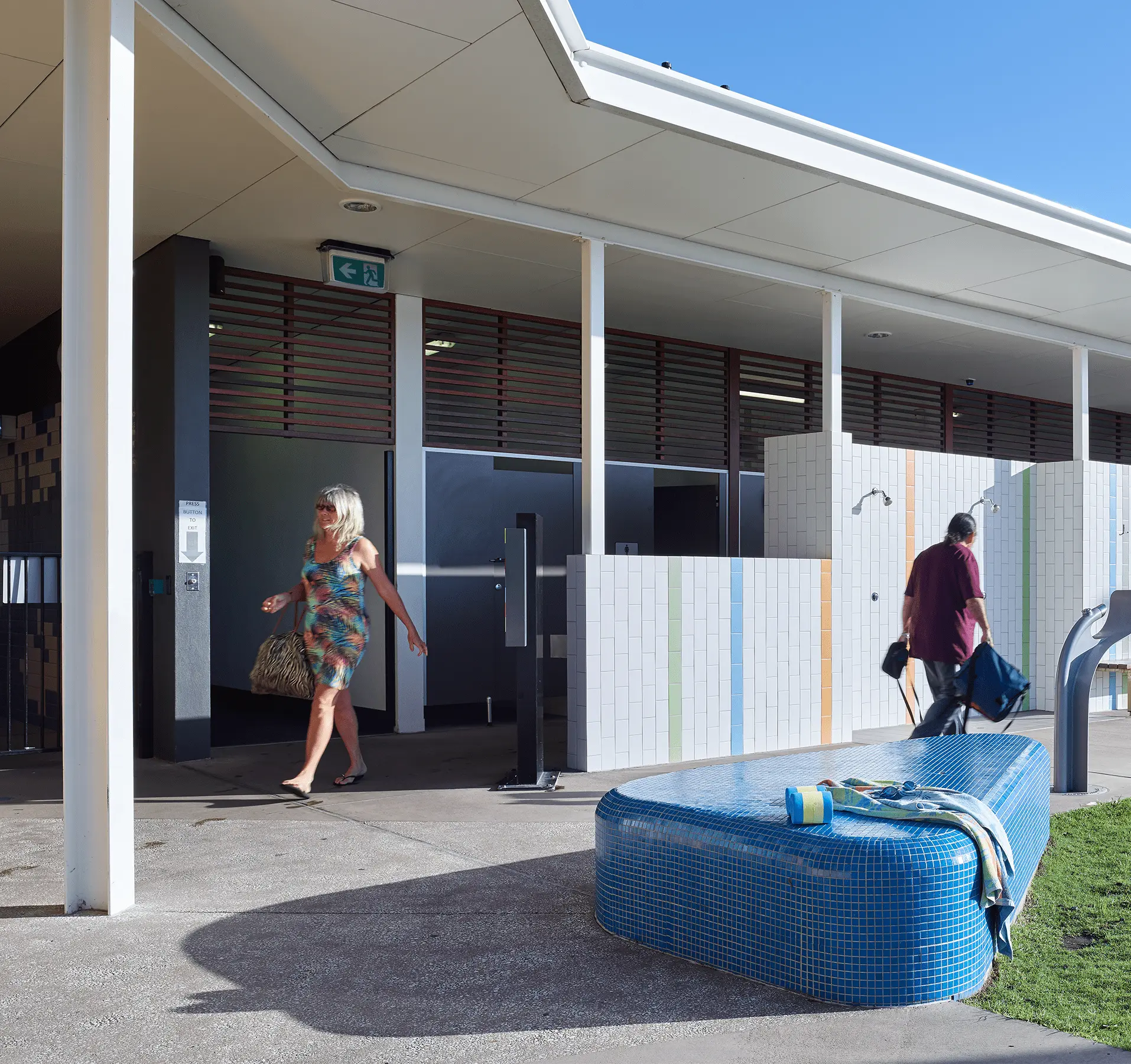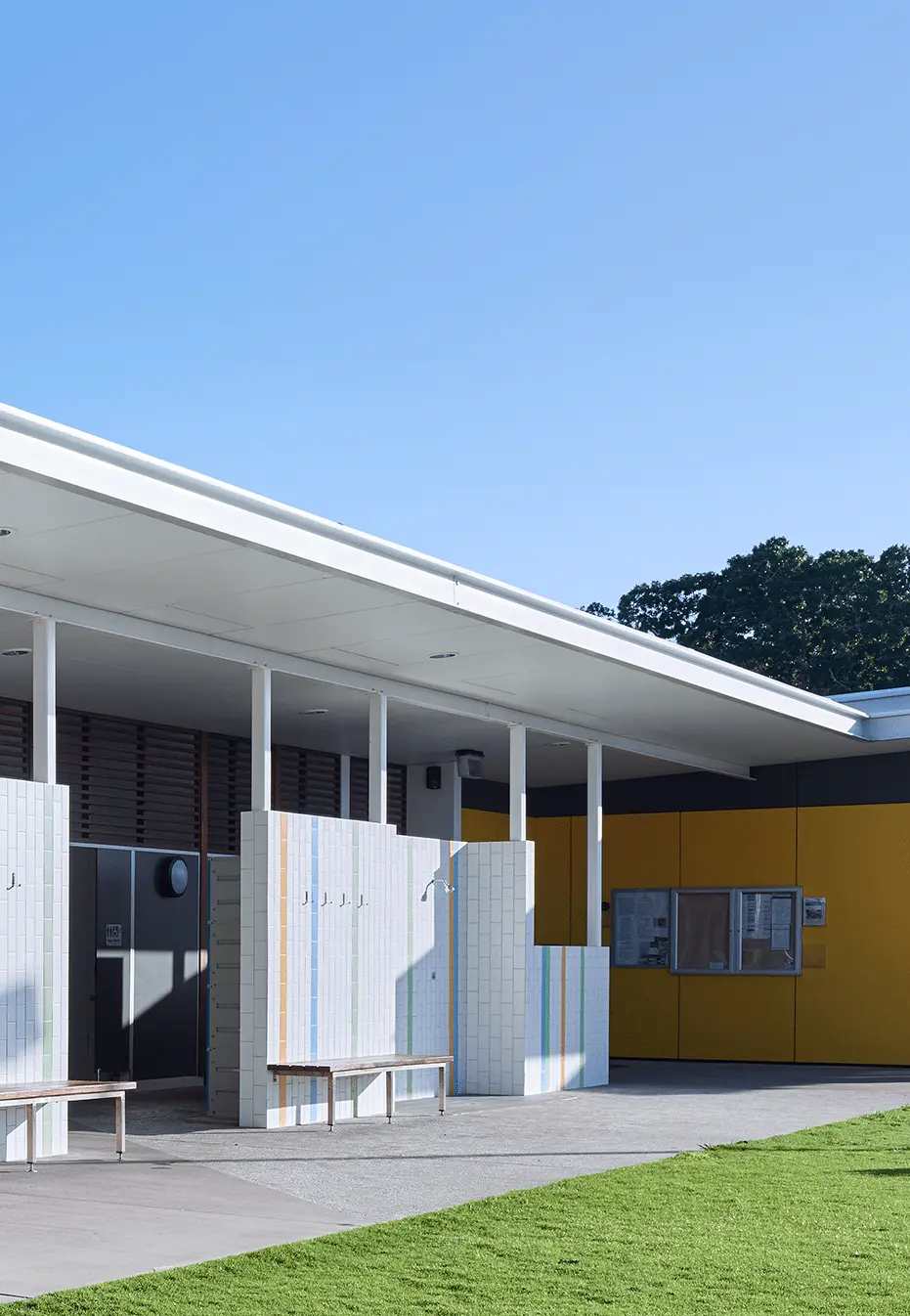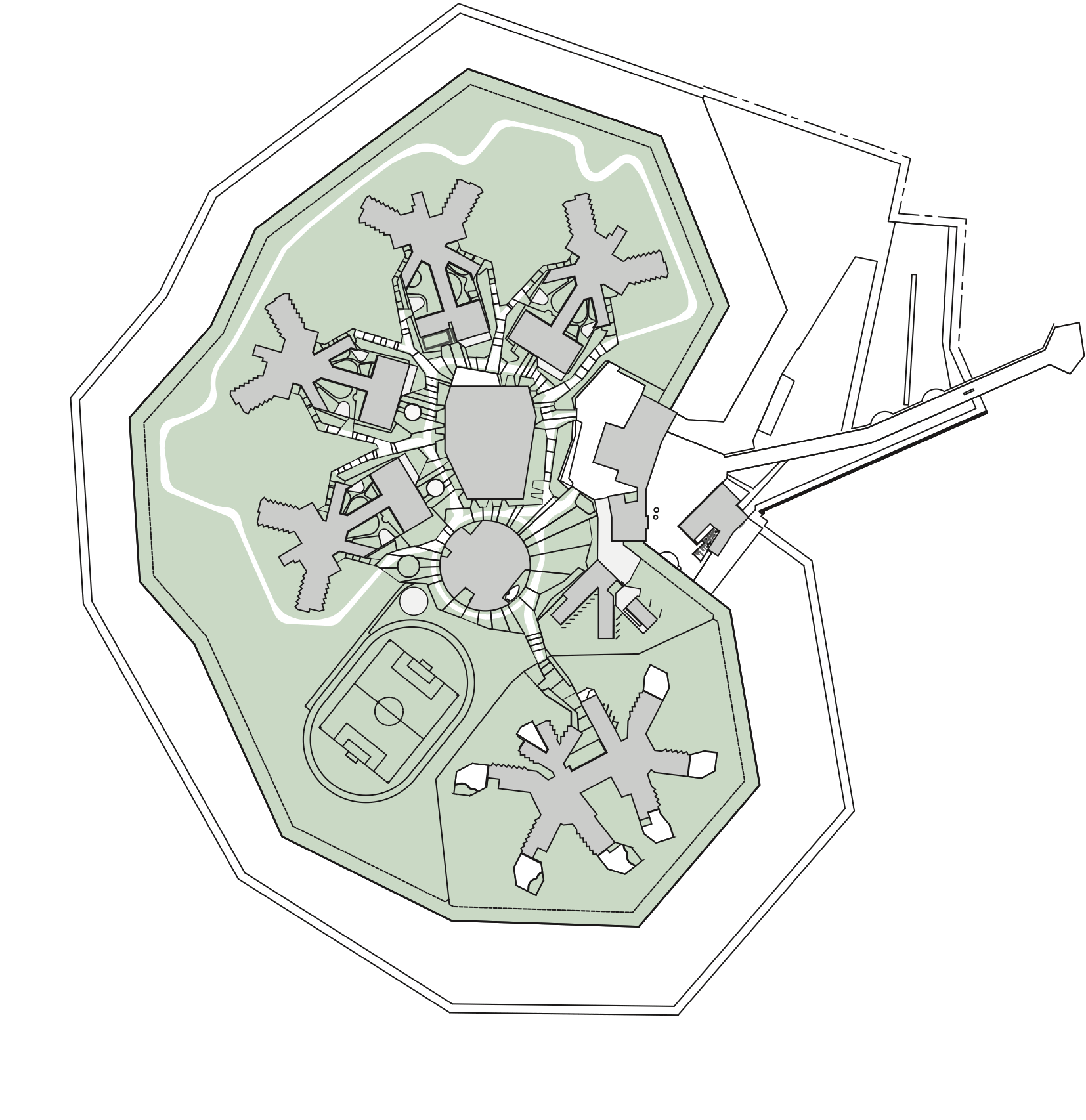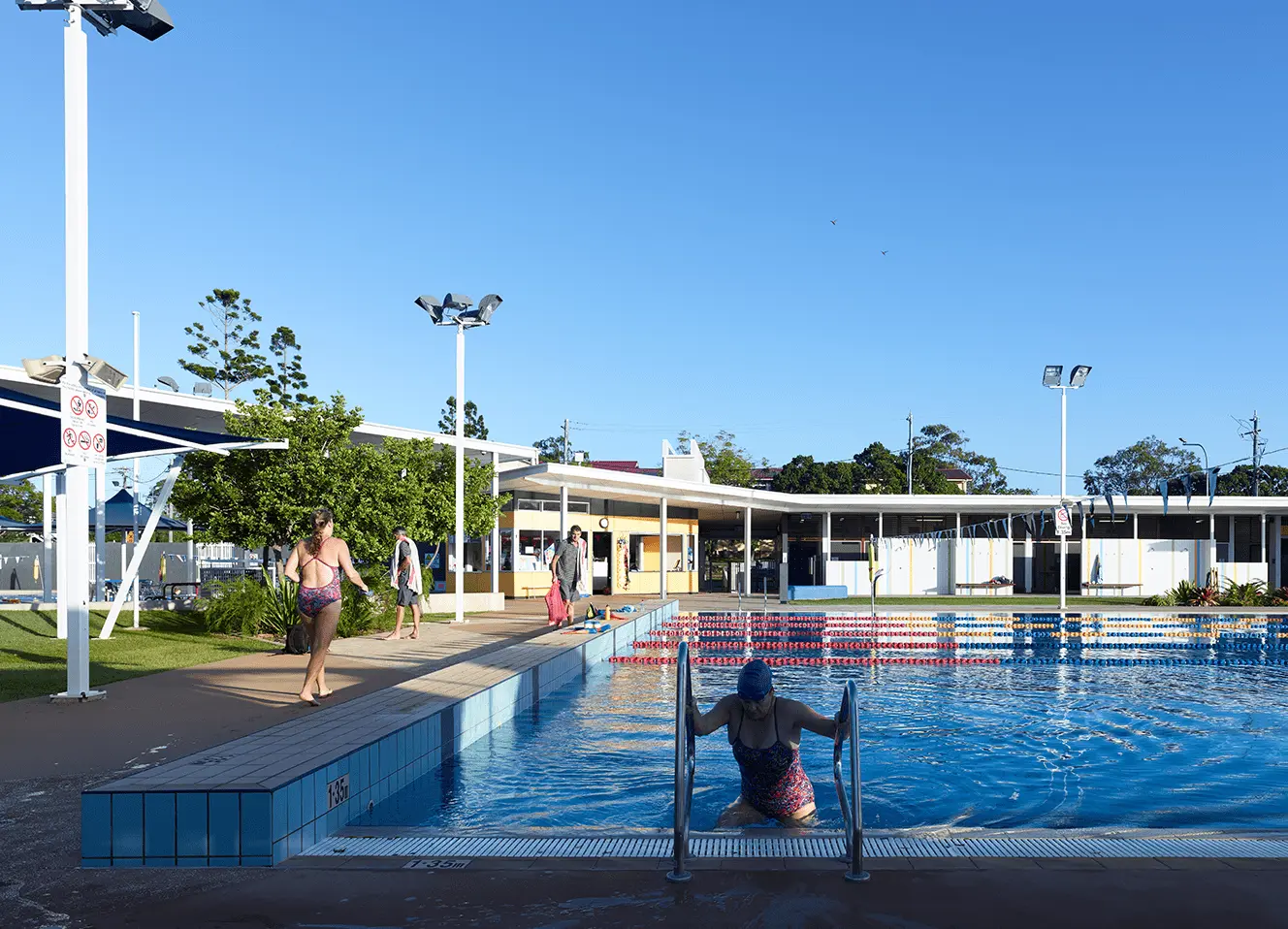











Maryborough Aquatic Centre
Originally built in the 1950s as part of the construction of war memorial pools throughout the country, the Maryborough Aquatic Centre was in need of redevelopment and expansion. Based on our experience with aquatic centres and the local government, Guymer Bailey Architects was selected to design the redevelopment of the administration building and change facilities, and the all new hydrotherapy/learn-to-swim pool and waterpark.
To update this important landmark we designed a fresh, modern street frontage that features a multi-coloured ceramic-tile mural and transparent printed façade panels that display a map of the Maryborough Aquatic Centre and wider community. We also replaced the existing 50-metre pool and refurbished the heated 25-metre pool. The facilities were planned around a single controlled point of entry with direct line-of-sight surveillance of the main pools and activity areas, with the street frontage designed to entice visitors, showcasing the fun attractions in the new waterpark.
Technological enhancements have reduced energy use and saved water, minimising running costs and maintenance for the Council. This and the improved managerial efficiencies have significantly improved the financial viability of the facility.
Stage A works included the refurbishment and extension of an existing two-storey classroom block as well as the construction of a new covered walkway through the centre of the school.
PROCESS
To update this important landmark we designed a fresh, modern street frontage that features a multi-coloured ceramic-tile mural and transparent printed façade panels that display a map of the Maryborough Aquatic Centre and wider community. We also replaced the existing 50-metre pool and refurbished the heated 25-metre pool. The facilities were planned around a single controlled point of entry with direct line-of-sight surveillance of the main pools and activity areas, with the street frontage designed to entice visitors, showcasing the fun attractions in the new waterpark.
METHODOLOGY
Technological enhancements have reduced energy use and saved water, minimising running costs and maintenance for the Council. This and the improved managerial efficiencies have significantly improved the financial viability of the facility.
TRADITIONAL CUSTODIANS OF THE LAND
The Badtjala People
COMPLETION
2012
LOCATION
Maryborough, Queensland
CLIENT
Fraser Coast Regional Council
PROJECT CONTACT
PHOTOGRAPHY
Scott Burrows Photography
VALUE OUTCOMES
“GB-A were an absolute pleasure to work with. The team on site and in the office never cut corners and were committed to delivering a very high quality project.”
Jim Spainard, Golburn Enterprise


Designing for a sustainable future is a core part of our organisational philosophy. Drawing on the knowledge from our Greenstar accredited team members and specialist consultants in environmentally sustainable design, we ensure our project teams integrate creativity with scientific rigour, to create designs that are conscientious of the natural environment and local ecology. Designing for a sustainable future is a core part of our organisational philosophy.
PRINCIPLES OF PASSION
During the design process, our project team not only considers the physical context of the designs but also examines the social and cultural context. Through every design, we look for ways to inspire positive attitudes, behaviours and emotional responses in people to encourage the responsible use of resources, increase cooperation among occupants, and communicate the values of society and cultural diversity.
Designing for a sustainable future is a core part of our organisational philosophy. Drawing on the knowledge from our Greenstar accredited team members and specialist consultants in environmentally sustainable design, we ensure our project teams integrate creativity with scientific rigour, to create designs that are conscientious of the natural environment and local ecology.


We design built environments from a holistic, sustainable perspective: each project reconciles ecological and social impacts within the current economic climate. We holistically evaluate environmental, cultural and financial sustainability in every task we undertake.
